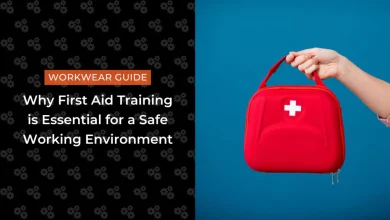Term Insurance at 25 vs 35 How Age Affects Your Best Term Insurance Plan for 1 Crore Coverage

When it comes to securing your family’s financial future, term insurance stands as one of the most crucial decisions you’ll make. The timing of this decision, particularly whether you purchase coverage at 25 or 35, can dramatically impact both your premiums and overall financial planning strategy.
Understanding how age affects your term insurance premiums becomes even more critical when you’re considering substantial coverage amounts like 1 crore. The difference between starting your coverage journey at 25 versus 35 isn’t just about a few hundred rupees – it’s about long-term financial implications that can save you lakhs over the policy term.
The Premium Reality: What the Numbers Tell Us
The insurance market in 2024-2025 shows premiums are increasingly age-sensitive. A healthy, non-smoking 25-year-old can secure ₹1 crore term insurance for as little as ₹616 per month until age 60.
However, premiums can double by age 35, reaching around ₹10,000 annually at 25 and ₹20,000 at 35 for a ₹1 crore policy. By age 45, this jumps to ₹1,199/month for non-smokers and ₹2,179/month for smokers.
For example, Rajesh from Mumbai paid an extra ₹2.1 lakh over a 30-year policy term simply by delaying his ₹1 crore term insurance purchase from age 25 to 35, costing him ₹14,000 annually instead of ₹7,000. This starkly illustrates why timing is crucial when buying term insurance.
Health Factors and Underwriting Differences
Age significantly affects your term insurance premiums and insurability. At 25, you’re likely in excellent health with minimal medical history, making the underwriting process straightforward with just basic tests.
However, by 35, lifestyle factors like stress, diet, and reduced activity can lead to age-related health concerns. Insurers account for this increased risk of conditions like diabetes or hypertension, which can result in higher premiums and a more cautious underwriting approach.
For instance, Priya got her term insurance at 25 with simple tests, but her 35-year-old friend Ankita needed extensive medical exams, leading to a much higher premium and longer application process.
Smoking further compounds this. Smokers face a 25-30% higher premium, a difference that widens with age due to accumulating health risks.
Coverage Options and Policy Flexibility
Age significantly impacts term insurance coverage options and flexibility. At 25, you get maximum flexibility, including longer policy durations (e.g., till age 75-80), higher coverage limits, and a wider selection of riders.
The landscape changes when you reach 35. While you can still access comprehensive coverage, the maximum policy terms may be reduced, and certain riders might become more expensive or unavailable. Some insurers impose stricter limits on coverage amounts relative to income for older applicants, potentially affecting your ability to secure the best term insurance plan for 1 crore coverage you need.
Younger applicants often benefit from promotional rates and special discounts, usually targeting the 25-30 age group, leading to additional cost savings not available to older buyers.
Policy customization also varies; at 25, you have more choices for premium payment terms, including limited payment periods for lifelong coverage. At 35, these flexible payment options might come with higher premiums or be unavailable due to increased risk assessment.
Long-term Financial Impact and Planning Considerations
Buying term insurance at 25 locks in lower premiums for the entire policy, ensuring predictable and manageable insurance costs. This stability helps with better long-term budgeting.
The money saved by purchasing early can be invested elsewhere, like mutual funds or fixed deposits, potentially generating significant returns. This makes early term insurance a strategy for overall financial optimization, not just insurance savings.
Securing coverage early means that as your income grows with career progression, the relatively fixed insurance premiums become a smaller portion of your earnings. Delaying until 35 means higher premiums often coincide with peak financial responsibilities like home loans and children’s education.
Finally, tax benefits under Section 80C (up to ₹1.5 lakh deduction annually) are maximized over a longer period when you start early, boosting your overall tax efficiency.
Making the Right Decision for Your Situation
While buying term insurance at 25 is ideal, if you’re 35, act now; further delay only increases costs and limits options.
Your decision should align with current and future financial responsibilities. A 25-year-old with minimal dependents might start with moderate coverage, while a 35-year-old with a family and mortgage needs immediate comprehensive protection, despite higher premiums.
Regularly review your insurance needs to adjust coverage as life evolves. Online platforms simplify comparison, making it easier to find competitive rates.
Term insurance fosters financial discipline and peace of mind. Though policies are more personalized now, age remains a core premium factor, making early purchase financially superior.
Conclusion
Choosing term insurance at 25 vs. 35 is a crucial financial strategy, not just a premium difference. While earlier is ideal, the most important step is to act now, regardless of age. Delaying protection for your family’s financial future often costs more than buying immediately.
Assess your needs, compare options, and make an informed decision aligned with your financial goals. The best term insurance is the one you have when needed, not one you plan to buy later.
Frequently Asked Questions
Q1: How much more expensive is term insurance at 35 compared to 25?
Term insurance premiums generally double between ages 25 and 35. A ₹1 crore policy might cost ₹10,000 annually at 25, but ₹20,000 at 35. This difference compounds significantly, leading to lakhs more in total premiums over the policy’s duration.
Q2: Can I increase my coverage amount later if I buy a smaller policy at 25?
Yes, many insurers offer riders and policy enhancement options that allow you to increase coverage without additional medical tests up to certain limits. However, any increase will be priced based on your current age, so it’s often more cost-effective to purchase adequate coverage from the beginning.
Q3: What happens if I develop health conditions between 25 and 35 – can I still get term insurance?
Developing health conditions later in life can impact term insurance. While you might still qualify, premiums will be higher, and some conditions could be excluded. Pre-existing issues diagnosed after age 30 are more likely to affect your insurability than minor health concerns at 25.
Q4: Is it worth switching term insurance policies if I bought one at 35 and later found cheaper options?
Switching term insurance can be complex and costly. Your new premium will be based on your current age, potentially making a new policy more expensive despite seemingly lower advertised rates. Always compare total costs and benefits thoroughly, and consider keeping your existing policy while exploring alternatives.
Q5: How does the claim settlement ratio vary for policies purchased at different ages?
Claim settlement ratios generally remain consistent for an insurer across all age groups, reflecting the company’s overall efficiency. However, policies bought younger might face fewer claim complications due to simpler initial underwriting and healthier profiles.




